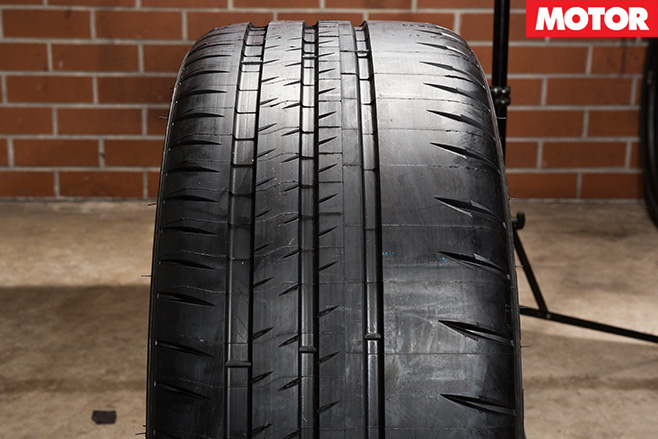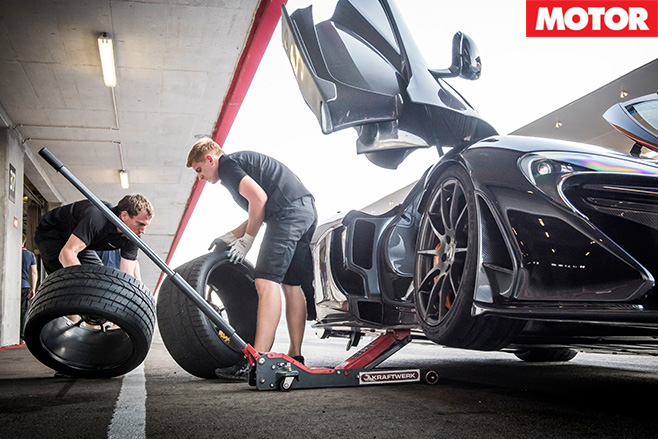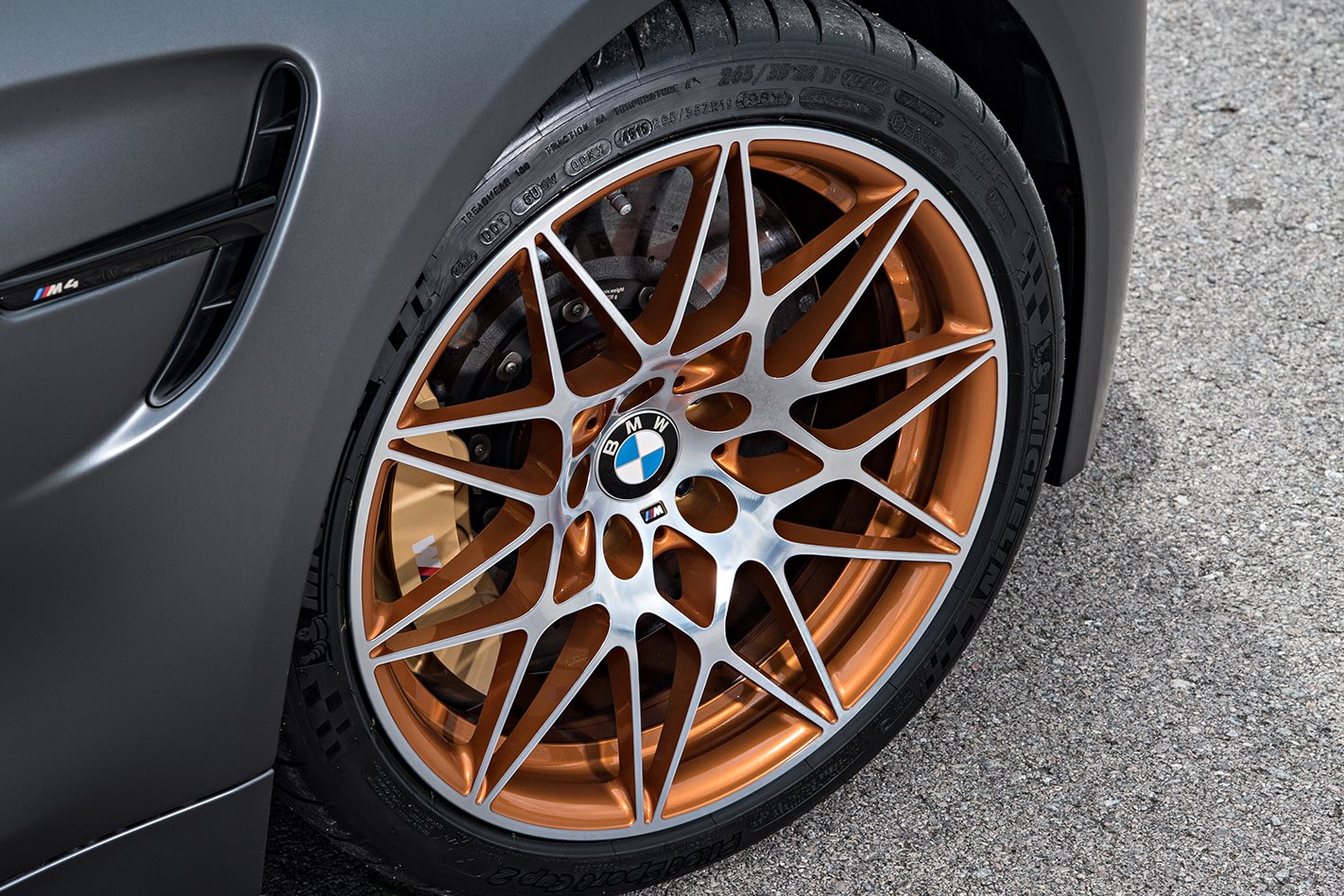There’s a clue in the name as to the reason why, up until about a decade ago, semi-slicks were considered an affordable, high-grip track-day option, rather than genuinely road-friendly rubber.
‘Slick’, as in ‘oil’, describes the lack of grip a tyre without grooved tread has in the wet. That’s why circuit-racing categories such as touring cars and F1 have intermediate and wet tyres to choose from.
Semi-slicks have always been semi-slippery in the wet. The limit for day-to-day driveability, up until relatively recently, was a set of grooved, yet sticky ultra-high performance (UHP) or S-compound tyres. This is because when you’re driving your hot car on the road and it rains, you can’t exactly dash into the pits for a set of wets.
As well as having less grooves leading to an increased road footprint and more grip (in the dry), semi-slicks use an even stickier ‘R-compound’ to further increase grip. However, this option introduces yet another compromise.
Softer rubber results in more rapid wear, even when you’re not exploiting the extra grip. In combination with strong sidewall and carcass construction designed to stand up to the rigours of racing, and an aggressive tread pattern, you have a tyre that’s noisier and bumpier than true road rubber.

If you ran semis on your road-car and gained a meaningful benefit over UHP tyres, you were clearly comfortable with losing your licence. These are tyres that don’t grip to their full potential until they’re up to optimal operating temperature – a temperature normally only found when on a racetrack.
If the semis on your daily Honda Integra Type R didn’t provide any actual benefit – just lots of drawbacks – you were a track-star poser; and you knew it.
However, like many other high-performance technologies, motorsport is to thank for progress when it comes to semi-slicks.
Hankook is an example. Once upon a time a no-name brand you wouldn’t dare consider compared to the European tyre manufacturers, Hankook owes its involvement in DTM and European Formula 3 for the development of its road-friendly semi-slick, the Ventus RS-3.
Like many semi-slicks these days they’ve come leaps and bounds for wet weather performance in particular.

Yep, the ol’ semis have come a long, long way indeed.
Rubbering up
Tyre tech for the road
1. GRIPPY WHEN WET Modern, streetable track tyres like the Hankook R-S3 use variable angle grooves to disperse water from the tread grooves more quickly. Being able to do so brings perhaps the biggest leap in wet performance without compromising the semi-slick’s high tread-to-groove-area ratio.
2. QUICK STEER Wider centre blocks are claimed to improve steering response. The extra surface area of these blocks produces extra grip, even when the tyre is not in its optimal operating temperature range.
3. CALM UNDER PRESSURE While it hasn’t necessarily helped make them better road-car rubber, some semi-slick products’ high-strength bead wires make them more durable under extreme driving conditions.
4. NO COMPROMISE The growth in popularity of semi-slick tyres (which has been matched by the ability of average hi-po cars) has also prompted some manufacturers to combine their track learnings with new compounds that feature improved carbon black and silica technologies. The improved blend of grip with wear life is even more beneficial on the road than the racing circuit.
5. CARBON IS NEW BLACK Carbon black, for the non-geeks amongst us, is a paracrystalline form of the chemical element carbon. It is formed by the incomplete combustion of heavy petroleum products and, as well as being used as a reinforcing filler in tyre construction, can be found as a pigment in paints and inks. Silica is the chemical compound silicon dioxide and commonly occurs in nature as quartz.





